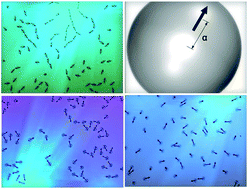Cluster formation in systems of shifted-dipole particles
Abstract
In this contribution we present computer simulation results on the cluster structures in systems, made of particles, with magnetic dipole moment shifted out from the centre of mass towards the particles' surface. This additionally introduced anisotropy in the system strongly affects the topology of clusters at both low and finite temperatures. In the ground state in the intermediate dipolar shift range the dimensionality plays a role due to possibilities for decreasing the inter-dipolar distance. For larger shifts, the dimensionality of the system practically does not influence the ground state energy, but the clusters can still differ in Q2D and 3D. It turns out that at finite temperature the average cluster size changes nonmonotonously with increase in the dipolar moment shift both in quasi 2D and 3D: it first increases, but when the dipolar moment is shifted by more than 50% from the centre, the cluster size starts decreasing fast and reaches unity. We show that our model in a medium range of shift values reproduces some of the cluster structures which are experimentally observed in [Baraban et al., Phys. Rev. E: Stat., Nonlinear, Soft Matter Phys., 2008, 77].


 Please wait while we load your content...
Please wait while we load your content...